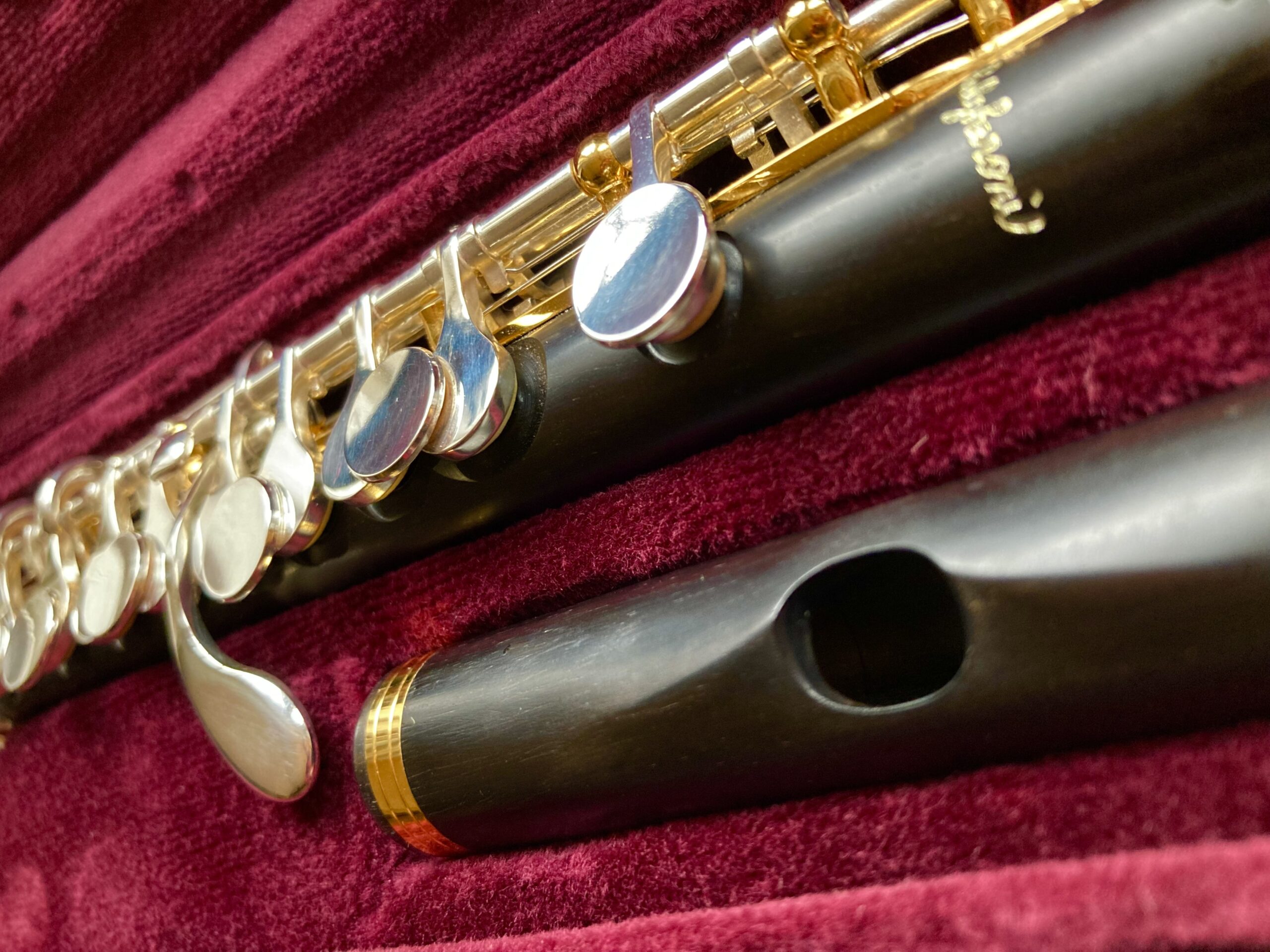There is a wealth of imaginative music available for solo piccolo so explore these wonderful pieces and prepare to grab the limelight!
Tilmann Dehnhard: Wake Up! for Solo Piccolo and Alarm Clock
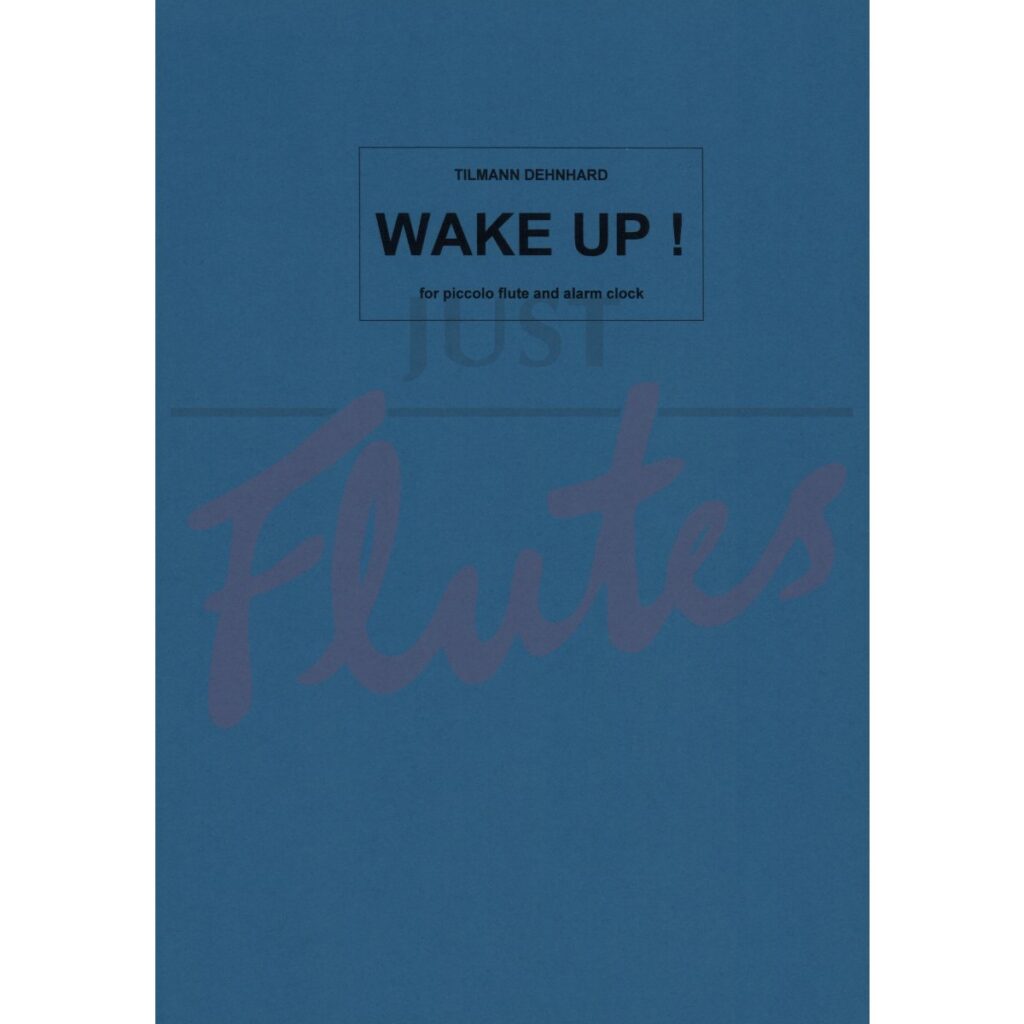
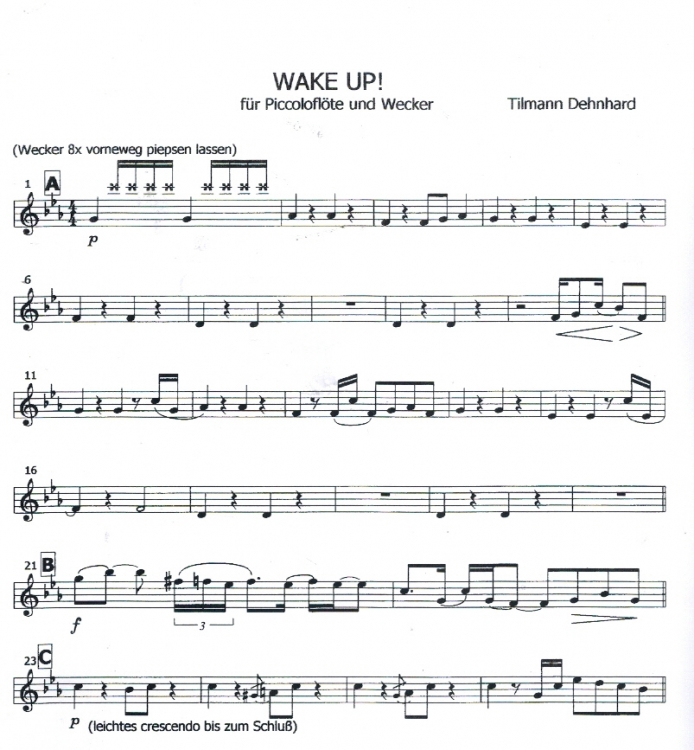
If you thought that an alarm clock was useful only for waking you up, think again – Dehnhard’s piece will open up a whole new world of timeless possibilities. There are many advantages here: it’s improvisational so you can tailor this to your own abilities, the notation is conventional and the alarm clock keeps you in time. It’s also a novelty item which would certainly add an extra dimension to a recital. Difficulty Guide: 7-8
Gordon Jacob: The Pied Piper for Solo Flute and Piccolo
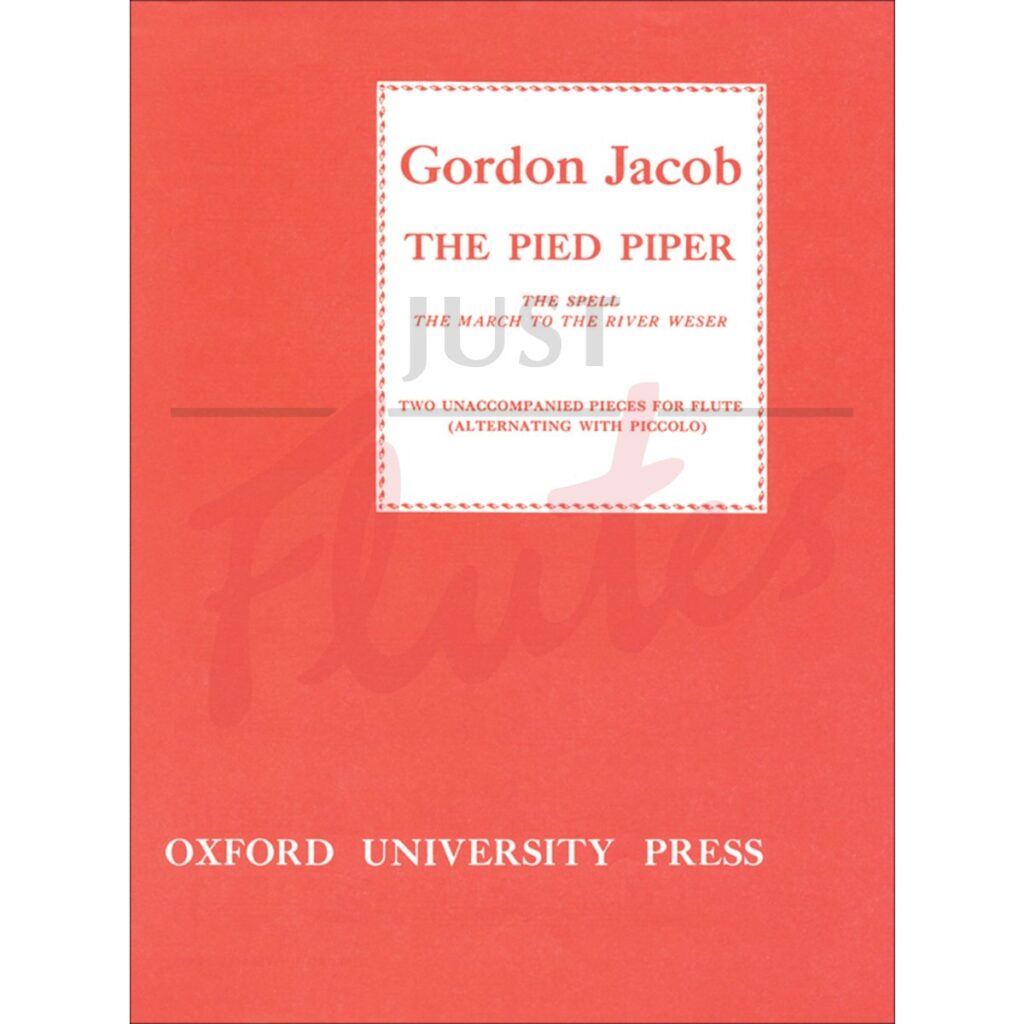
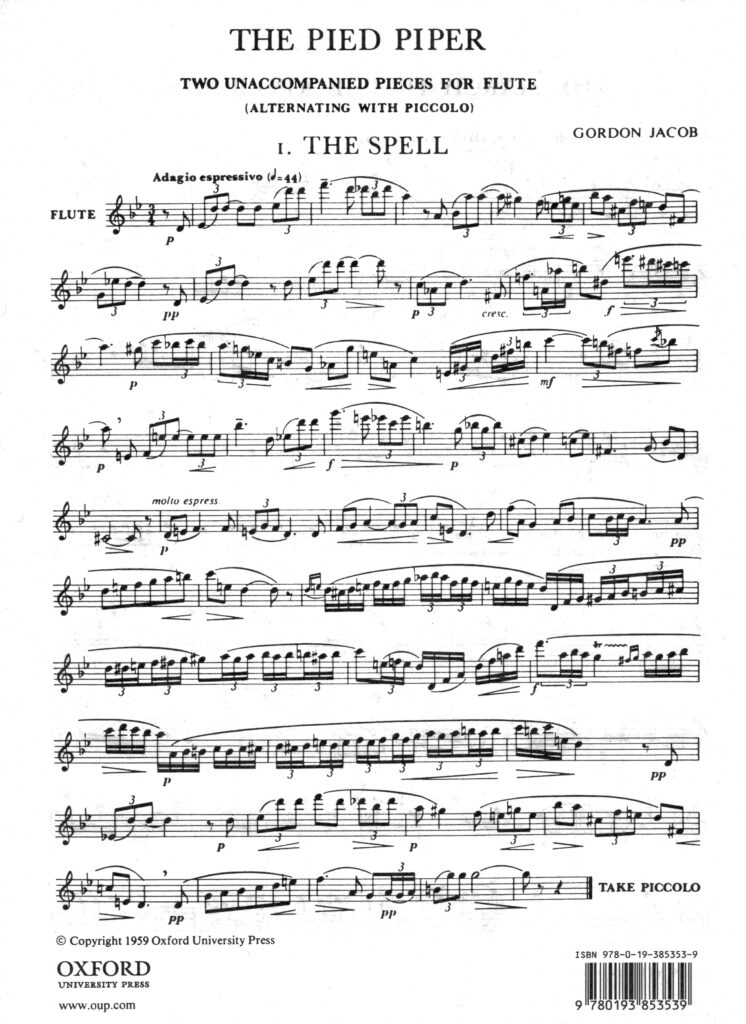
This piece tells the story of the Pied Piper of Hamlyn. The Spell for solo flute weaves its magic around intervals of 7ths which become increasingly more agitated before subsiding to an uncertain calm. The March is much more robust, characterized by strong rhythms and varied articulation. Although the piccolo does not venture above a top G there is plenty of excitement generated by loud colours, trills and a virtuoso ending. This is a wonderful piece that is a great example of how to manage both instruments one work. Difficulty Guide: 8
Amanda Harberg: Hall of Ghosts for Solo Piccolo
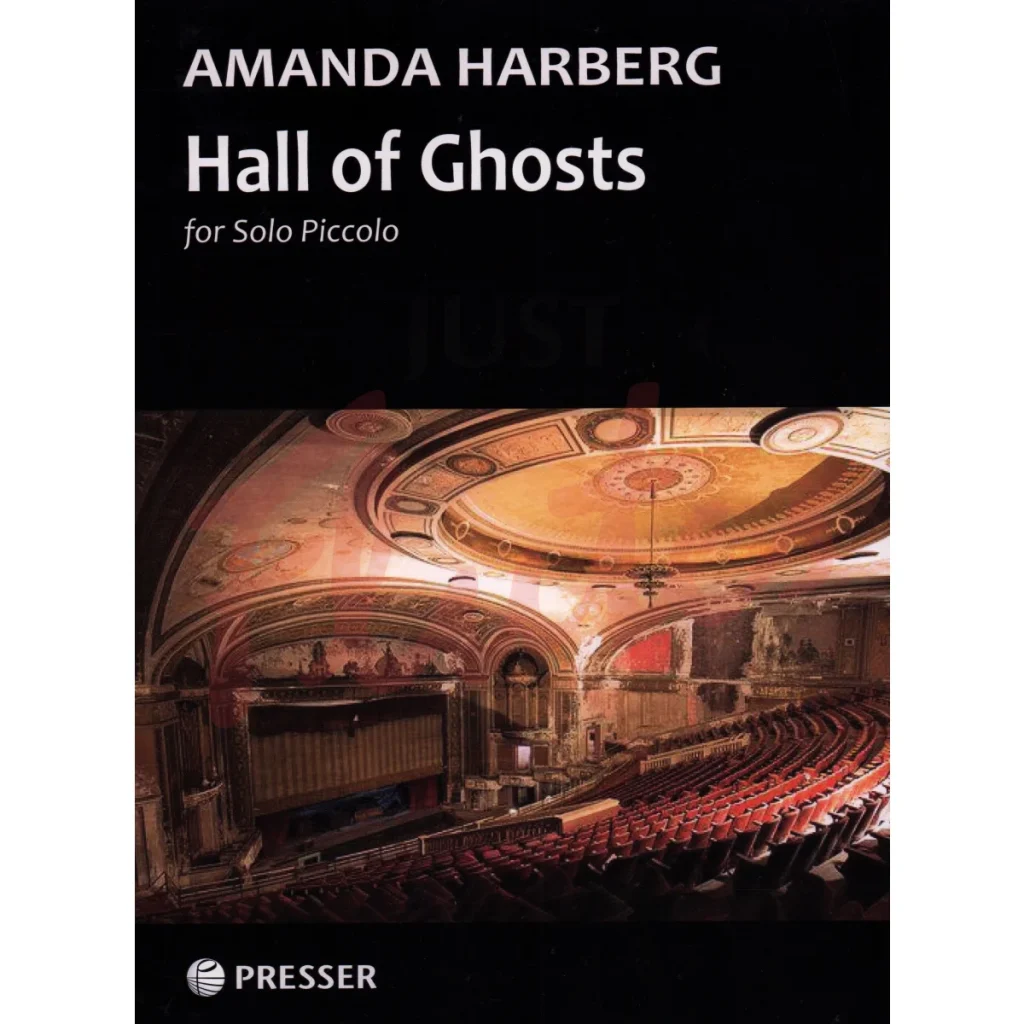
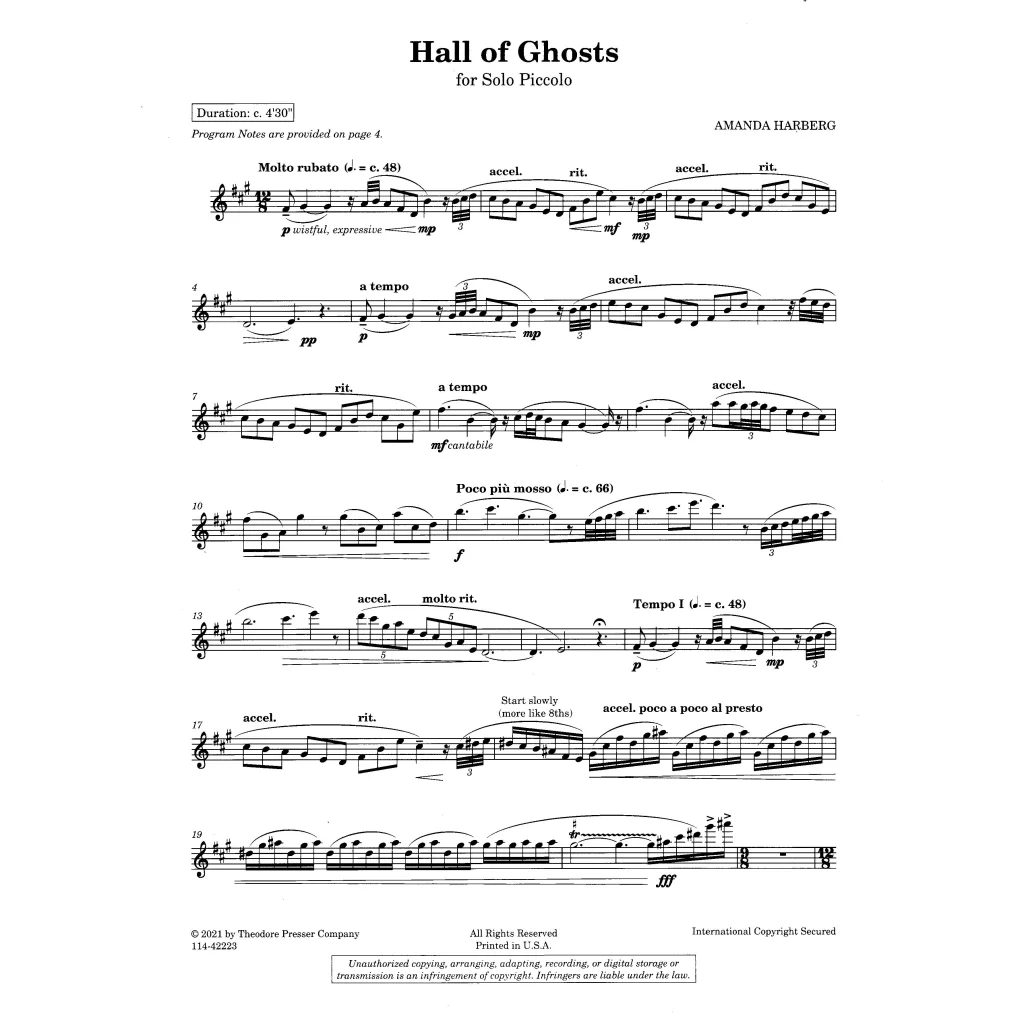
This is a great piece. Amanda Harberg has taken all the colours that characterise the piccolo and used them to fashion a beguiling melody and contrast it with a spikey dance. Technically challenging and musically rewarding this should be in every piccolo player’s collection! Difficulty Guide: 8-9
Anon arranged by Laurence Trott: The Bird Fancyer’s Delight for Solo Piccolo
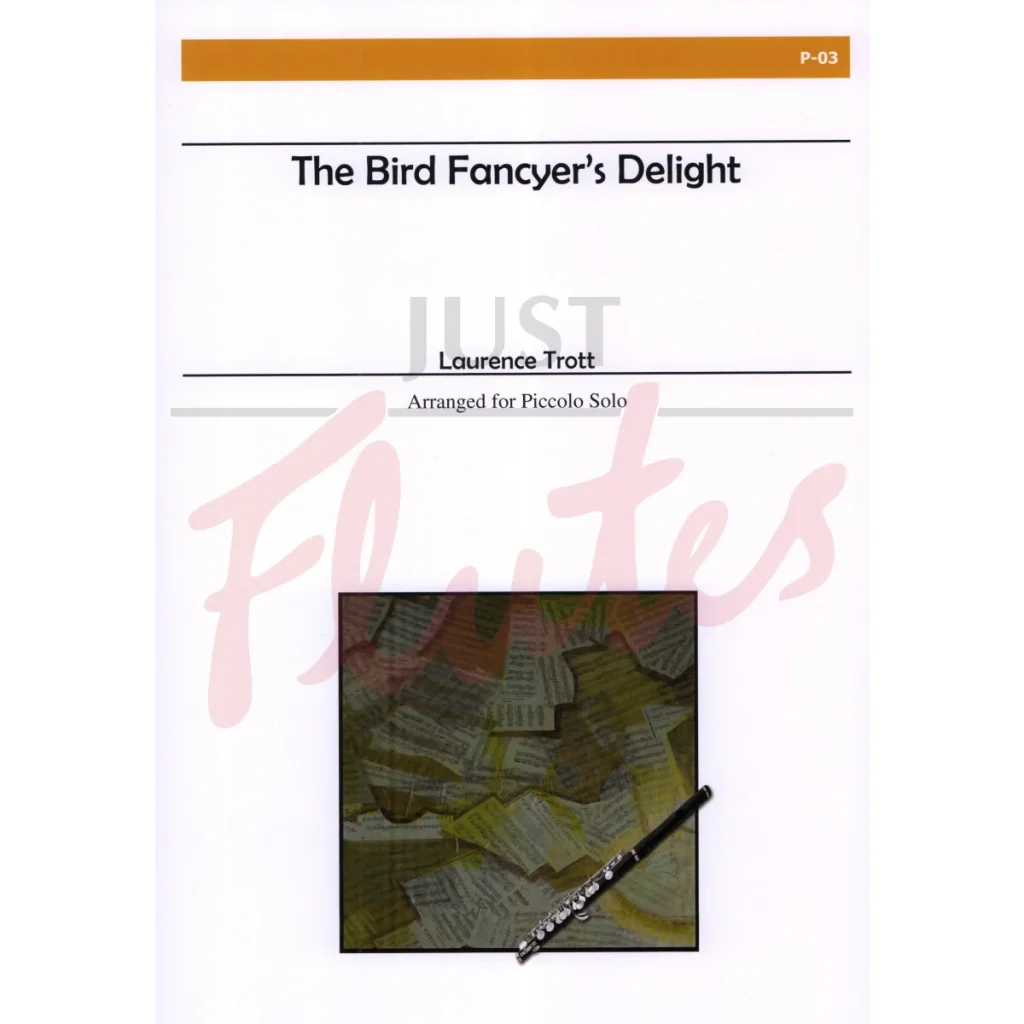

The origins of these short pieces written around 1717 are a little hazy but they were written with the purpose of training caged songbirds, popular in the eighteenth century, to sing. Laurence Trott has transcribed them simply and they are all completely charming. The notes range is limited making them ideally suited to developing that all important cantabile colour in the piccolo’s lower registers, and the absence of any challenging finger work concentrates that focus on sound. Played as a whole group, these lovely vignettes are a welcome change from all the hustle and bustle normally associated with the solo piccolo repertoire and would be something completely different in any recital. Difficulty Guide: 6
Lisa Neher: Night Song for Moths for Solo Piccolo
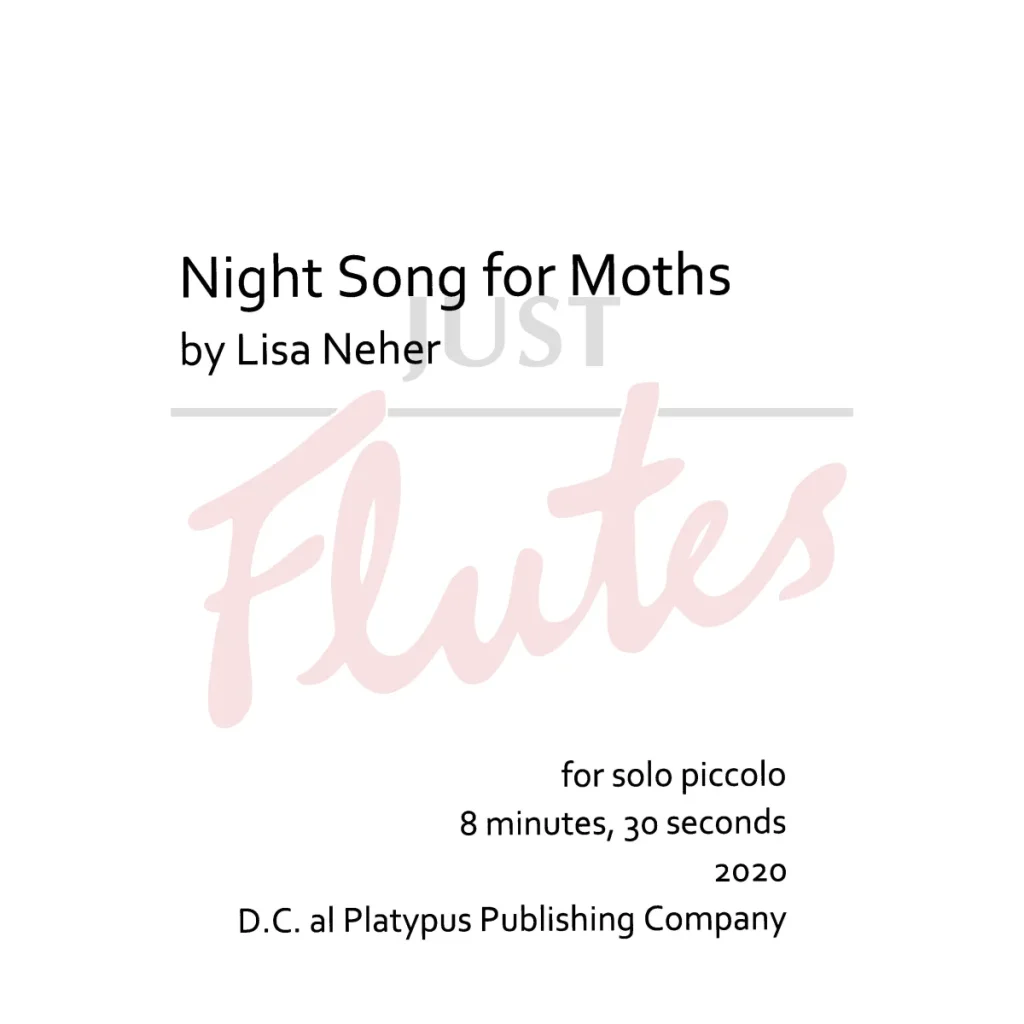
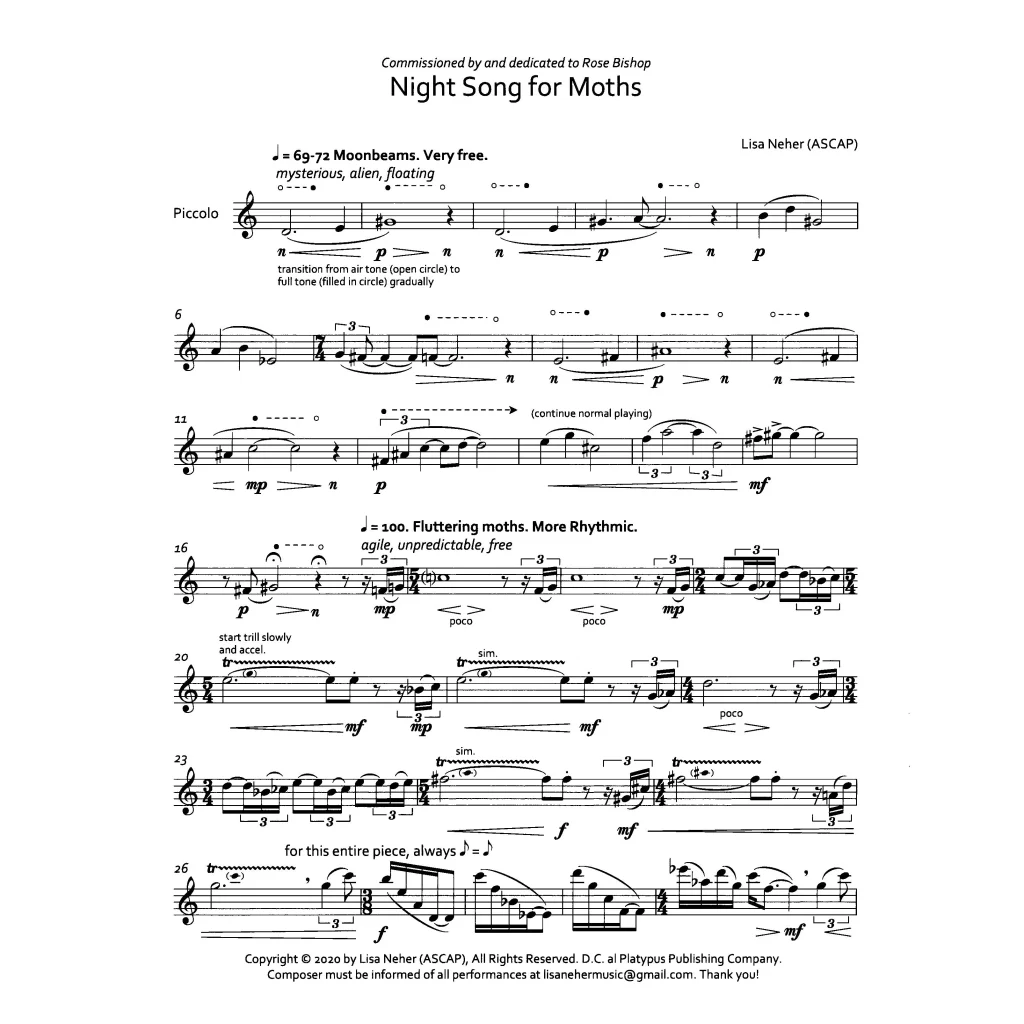
This piece shows the piccolo at its most lyrical. It has a loose narrative that shapes the structure, making the improvisatory style easier to understand. Lisa Neher uses the lower parts of the piccolo to evoke nocturnal colours which, together with her flexible rhythmic approach, conjures up exactly the world of the title. Imaginative and lovely to play, this is an wonderful piece that will add an extra dimension to any recital. Difficulty guide: 8
Click below for more Piccolo Music recommendation
